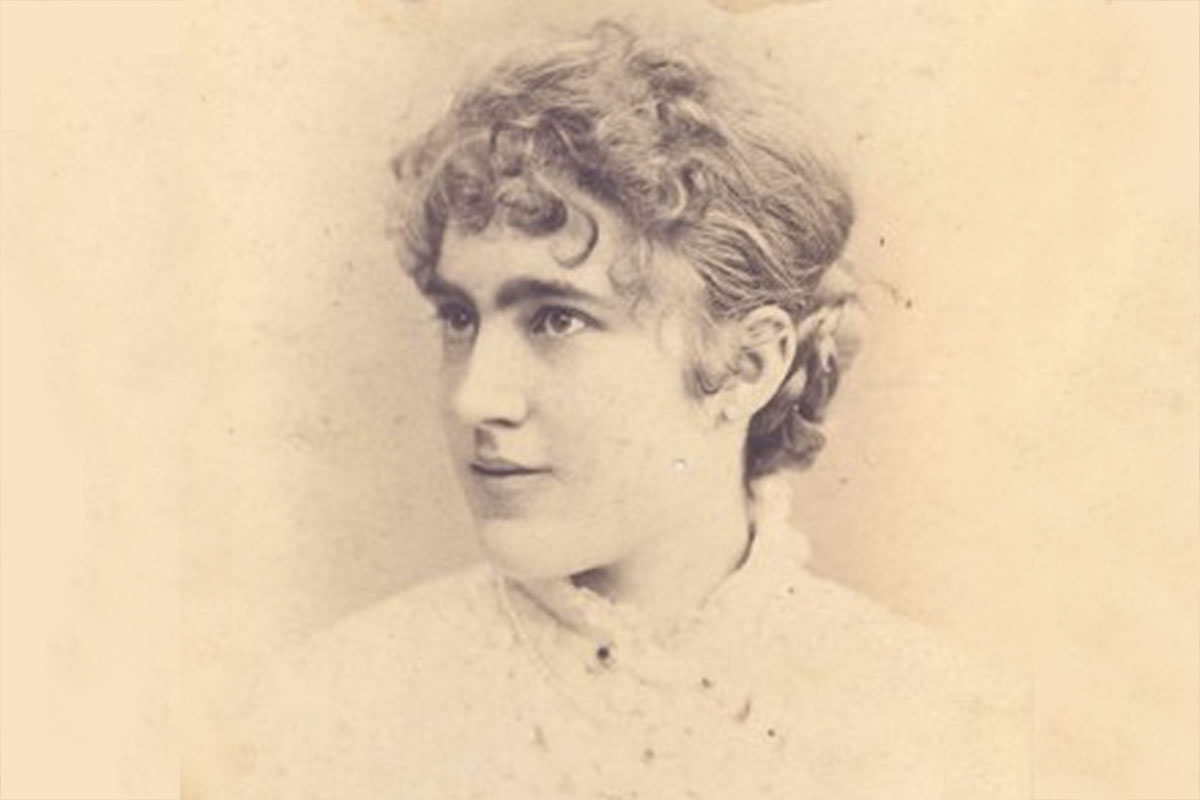Marion Larrabee Volk (1859–1925) decided to improve upon a generations-old native tradition of making “drawn” rugs, and with the help of her son Wendell and daughter Marion she began Sabatos Handcrafts in 1901. A drawn rug is a type of hooked rather than woven rug. The Volks gathered together residents of Center Lovell, who then carried out every part of the rug-making process from tending and shearing sheep to formulating the indigo dye for which they were known. The only part of the process not done by hand was the carding—the wool was taken to “the old carding mill of South Waterford, the only carding mill in a country side of many miles extent.” The preparation for weaving a rug took one person seven days while the actual weaving was done at a rate of a half a square foot in a day. About twenty-five rugs were made in five years. The average size was 3’ x 5’ and they sold to “the curious summer resident” for about $50 each.
The first Sabatos rug made was drawn upon a burlap backing. Its design was based on Native American patterns although the distinctive Sabatos indigo blue was predominant in the color scheme. They were evidently pleased with the design but not the structure of this prototype: The design appeared again on the cover of the brochure Wendell Volk printed from a wood block he carved. The brochure states that the burlap backing on this first rug was not acceptable. Wendell Volk wrote, “The first one was drawn through burlap, but this foundation was at once given up, as not being of the same durability of the pile.”
The Sabatos weavers were not an inconsequential, isolated phenomenon. The Volks had international connections that helped them make a significant contribution to the American Arts and Crafts movement. Sabatos-made looms were used at the Teachers’ College at Columbia University, the Ethical Culture School, the boys’ branch of the West Side Settlement School, and at Dr. Grenfel’s Mission in Labrador. Sebatos rugs won a silver medal at the 1904 Louisiana Purchase Exposition. Hull House in Chicago and the Troy School of Arts and Crafts in New York sought technical advice from the Volks.
Sabatos produced woven, plain yard goods and narrow woven strips intended for use as portieres as well as rugs; the Indian motifs incorporated in the latter made them fine expressions of Arts and Crafts useful beauty. It is their utility that makes them precious rarities today. While there were a number of small rug-making enterprises flourishing at the turn of the last century, little of their product survived the hard use they were subjected to.
source:
Robert Edwards, americandecorativeart.com




